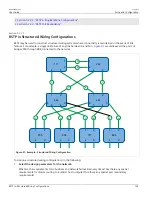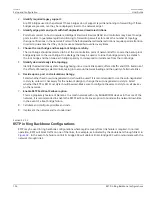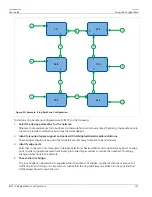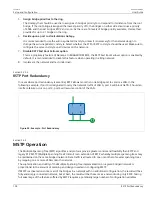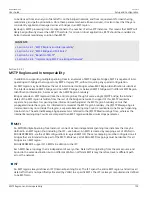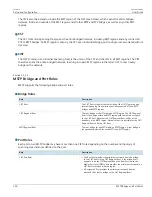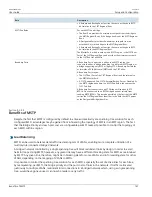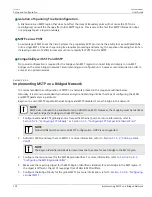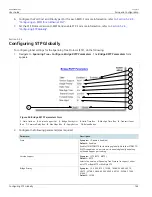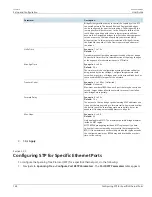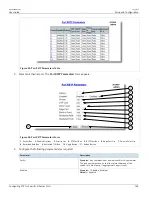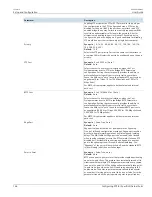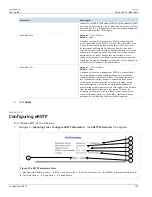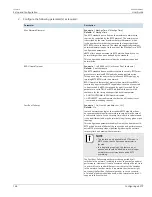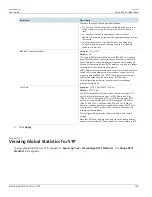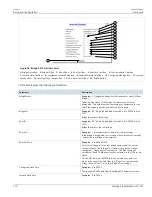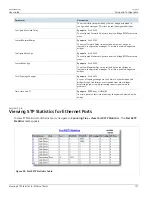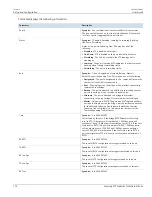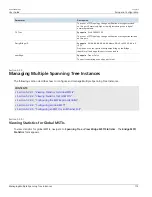
Chapter 5
Setup and Configuration
RUGGEDCOM ROS
User Guide
158
RSTP Port Redundancy
5.
Assign bridge priorities to the ring.
The strategy that should be used is to assign each bridge’s priority to correspond to its distance from the root
bridge. If the root bridge is assigned the lowest priority of 0, the bridges on either side should use a priority
of 4096 and the next bridges 8192 and so on. As there are 16 levels of bridge priority available, this method
provides for up to 31 bridges in the ring.
6.
Decide upon a port cost calculation strategy.
It is recommended to use the auto-negotiated cost style, unless it is necessary for the network design to
change the auto-negotiated cost style. Select whether the STP or RSTP cost style should be used. Make sure to
configure the same cost style on all devices on the network.
7.
Disable RSTP Fast Root Failover option.
This is a proprietary feature of Siemens. In RUGGEDCOM ROS, the RSTP Fast Root Failover option is enabled by
default. It is recommended to disable this feature when operating in a Ring network.
8. Implement the network and test under load.
Section 5.2.2.3
RSTP Port Redundancy
In cases where port redundancy is essential, RSTP allows more than one bridge port to service a LAN. In the
following example, if port 3 is designated to carry the network traffic of LAN A, port 4 will block traffic. Should an
interface failure occur on port 3, port 4 will assume control of the LAN.
A
1
2
3
4
Figure 93: Example - Port Redundancy
Section 5.2.3
MSTP Operation
The Multiple Spanning Tree (MST) algorithm and protocol provide greater control and flexibility than RSTP and
legacy STP. MSTP (Multiple Spanning Tree Protocol) is an extension of RSTP, whereby multiple spanning trees may
be maintained on the same bridged network. Data traffic is allocated to one or another of several spanning trees
by mapping one or more VLANs onto the network.
The sophistication and utility of the Multiple Spanning Tree implementation on a given bridged network is
proportional to the amount of planning and design invested in configuring MSTP.
If MSTP is activated on some or all of the bridges in a network with no additional configuration, the result will be a
fully and simply connected network, but at best, the result will be the same as a network using only RSTP. Taking
full advantage of the features offered by MSTP requires a potentially large number of configuration variables












